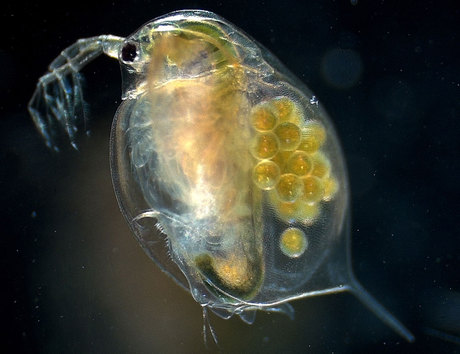Water fleas have genetically adapted to climate change

Researchers from KU Leuven, Belgium, have led the first study to document evolutionary changes in the thermal tolerance of natural populations as a response to climate change. Writing in the journal Nature Climate Change, the team explained that “the degree to which natural populations respond genetically to … [climate] changes is key to predicting ecological responses”.
The team investigated the water flea Daphnia - a zooplankton organism that is typically found in shallow ponds and lakes. Under normal circumstances, water fleas reproduce asexually. But in difficult living conditions, such as food shortages and heatwaves, they mate and lay dormant eggs. These encapsulated embryos are particularly resistant to harsh conditions - a dormant egg can remain in the sediment of a pond for dozens of years and still be able to hatch.
“When water fleas reproduce asexually, their offspring is genetically identical to the mother,” said corresponding author Aurora Geerts. “But when they mate, this results in genetic variation. The genetically fittest water fleas - the ones that are best adapted to the environment - survive and lay dormant eggs.”
The team decided to hatch and compare the dormant eggs of water fleas from two time periods: 1955-1965 and 1995-2005. The eggs were selected from a shallow lake near Felbrigg Hall, England, where the average temperature has risen around 1.15°C and the number of heatwaves has tripled over the past 40 years.
“We examined the heat tolerance of the resulting populations from these two time periods by scoring the temperature at which the water fleas lost motor function and fainted,” Geerts said. “The critical maximum temperature for activity for the water fleas from the recent sediment layer is half a degree more than 40 years ago.”
In another experiment, the biologists examined whether current populations of Daphnia can genetically adapt to higher temperatures. Over two years, the team exposed a population of water fleas to two temperature treatments: ambient temperature and ambient +4°C.
“From the sediment of experimental units of both treatment groups, we hatched dormant eggs,” Geerts stated. “We then measured the heat tolerance of the water fleas under standardised laboratory conditions. For the water fleas that had been exposed to a heated environment, the critical temperature for activity was on average 3.6° higher than for water fleas from the control group.”
The study shows that animal populations can adapt and already have adapted to higher temperatures and increased heatwave frequencies - two results of climate change - by means of evolutionary changes in their heat tolerance. However, Geerts noted that the capacity for genetic adaption is not enough to guarantee success.
“Climate change may have an impact on other factors as well,” she said. “The water flea might be exposed to more enemies, less food or an increased sensitivity to parasites. But our results show that we need to take into account the evolutionary dynamics of a species if we want to predict how it will respond to climate change.”
Govt announces $158m in funding for three new CRCs
Minister for Industry and Science Ed Husic has allocated $158 million to three new Cooperative...
Why are young plants more vulnerable to disease?
Fighting disease at a young age often comes at a steep cost to plants' growth and future...
Liquid catalyst could transform chemical manufacturing
A major breakthrough in liquid catalysis is transforming how essential products are made, making...





